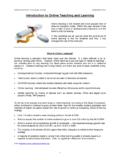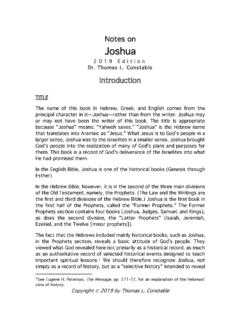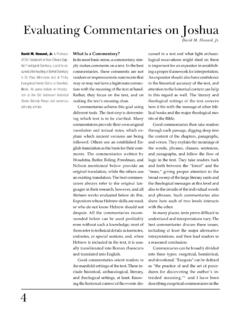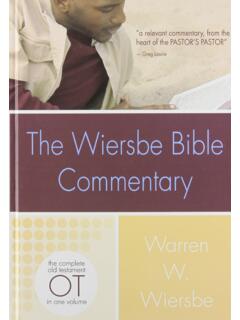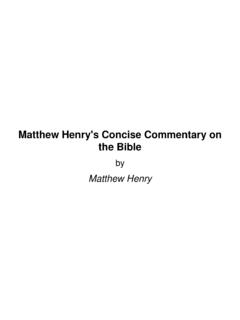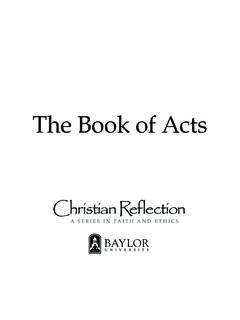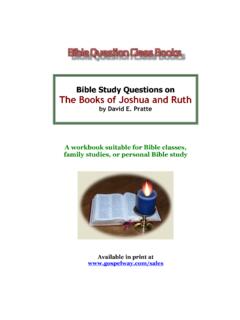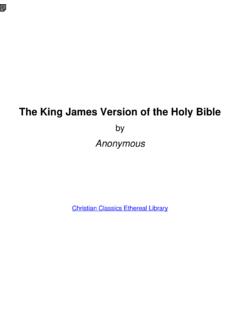Transcription of Introduction to Web 2.0 Technologies
1 Introduction to Web joshua Stern, Introduction to Web Technologies What is Web A simple explanation of Web (3 minute video): A complex explanation of Web (5 minute video): An interesting, fast-paced video about (4:30 minute video): Web is a term that describes the changing trends in the use of World Wide Web technology and Web design that aim to enhance creativity, secure information sharing, increase collaboration, and improve the functionality of the Web as we know it (Web ). These have led to the development and evolution of Web-based communities and hosted services, such as social-networking sites ( Facebook, MySpace), video sharing sites ( YouTube), wikis, blogs, etc. Although the term suggests a new version of the World Wide Web, it does not refer to any actual change in technical specifications, but rather to changes in the ways software developers and end-users utilize the Web.
2 Web is a catch-all term used to describe a variety of developments on the Web and a perceived shift in the way it is used. This shift can be characterized as the evolution of Web use from passive consumption of content to more active participation, creation and sharing. Web Websites allow users to do more than just retrieve information. Now users can build on the interactive facilities of Web to provide "network as platform" computing, allowing users to run software-applications entirely through a browser. Users are able to co-author the data on a Web site and exercise control over it. These sites have an "architecture of participation" that encourages users to add value to the application as they use it. This stands in contrast to traditional Websites, which limit visitors to passive viewing and whose content only the site owners can modify.
3 Web Websites typically include some of the following features/techniques: Search: the ease of finding information through keyword searching. Links: guides to important pieces of information. The best pages are the most frequently linked to. Authoring: the ability to create constantly updating content that is co-created by users. In wikis, the content is iterative in the sense that the people undo and redo each other s work. In blogs, it is cumulative in that posts and comments of individuals are accumulated over time. Tags: categorization of content by creating tags that are simple, one-word descriptions to facilitate searching and avoid having to fit into rigid, pre-made categories. Extensions: automation of pattern matching for customization by using algorithms ( recommendations).
4 Signals: the use of RSS (Real Simple Syndication) technology to create a subscription model which notifies users of any content changes. Web and Education Web is difficult to define because it is not really a thing, but an approach, or shift, in how we use the Web we already have. The key is a change to a more active user who actually creates content rather than just passively receiving it. This change in how we experience the Web mimics 1 Introduction to Web joshua Stern, a parallel shift occurring in education. Instead of a top-down, sage on the stage approach to teaching, we are moving towards a more constructivist, guide on the side pedagogy which empowers students and encourages them to take responsibility for, and co-create, their learning experience.
5 Young people seem to be particularly attracted to Web developments, often for the social aspects of easy communication, coordination, and online self-expression. Web innovations harmonize well with current thinking about educational practice. In particular, Web offers students new opportunities to take more control of their learning and create customized information, resources, tools, and services. Web also encourages a wider range of expressive capability, facilitates more collaborative ways of working, enables community creation, dialogue and knowledge sharing, and creates a setting for learners to attract authentic audiences. I believe it is our duty as instructors to reach out to our students as best we can. Whether or not we choose to embrace Web Technologies remains to be seen, but at the very least we should understand the concept and its main components.
6 This is my intention in offering this workshop. Now we will look at a few of the most popular Web tools in more depth: Blogs Podcasts Social Networks Wikis ePortfolios Micro-Blogs Social Bookmarking Adapted from: and Blogging Blogs in Plain English (3 minute video): Example blogs: Over 70 million blogs have been created since 2003 and the numbers just keep increasing! Why? Because people want to express themselves and they like to have an audience. The World Wide Web makes it possible for you to publish your thoughts (or whatever else you d like) and distribute them out to the entire world (of Internet-connected computer users). And believe it or not, this can all be done for free! Nowadays, there are several good, reliable blogging tools available for free on the Web.
7 You can set up your account and start blogging away within minutes. Blogging Definitions What is a Web log (Blog)? A Weblog, or "blog", is a personal journal on the Web. Weblogs cover as many different topics, and express as many opinions, as there are people writing them. Some blogs are highly influential and have enormous readership, while others are mainly intended for a close circle of family and friends. Why are blogs important? The power of Weblogs is that they allow millions of people to easily publish their ideas, and millions more to comment on them. Blogs are a fluid, dynamic medium, more akin to a "conversation" than to a library which is how the Web has often been described in the past. With an increasing number of people reading, writing, and commenting on blogs, the way we use the Web is shifting 2 Introduction to Web joshua Stern, in a fundamental way.
8 Instead of primarily being passive consumers of information, more and more Internet users are becoming active participants. Weblogs allow everyone to have a voice. What are common misperceptions about Weblogs? The main misconception about blogs is that they are only personal diaries. Weblogs come in all flavors, from personal journals that are mainly shared with close friends and family, to blogs with readership levels placing them in the league of mainstream media. Blog topics include political commentary, product reviews, scientific endeavors, and any area of information where people have a deep expertise and a desire to express it. What is a blogger? A blogger is someone who writes a blog. What is the blogosphere? Blogosphere is a word used to describe the online community of bloggers and their writings.
9 How is a Weblog different from a Website? A Weblog is a Website that is updated frequently, most often displaying its material in journal-like chronological dated entries or posts. Most blogs allow readers to post comments to your post, and link from their blog to your posts using the permanlink URL or address. In a blog, the content can be published and syndicated separate from the formatting using an RSS feed. Readers can then subscribe to the feed to automatically receive updates. What is a Weblog post or entry? An entry, a post, or a posting, are the terms often used to refer to a specific article or commentary written by the blogger on his or her Weblog. What is a comment? Many Weblogs allow readers to write a reaction to what was written in the blog entry.
10 Comments can often be found directly following the blog entry. What's the relationship between blogging and journalism? Weblogs are different from traditional media. Bloggers tend to be more opinionated, niche-focused, and partisan than journalists, who strive for editorial objectivity. Blogs encourage dialog with readers, which is why many traditional journalists now also have blogs. The relationship between blogging and journalism can be characterized as symbiotic rather than competitive. Bloggers are often sources for journalists, and many blogs contain commentary and riffs on what journalists wrote that day. Frequently newsmakers use blogs to respond to what journalists write about them. And by linking to traditional media, Weblogs can introduce new readers to journalists and their publications.
